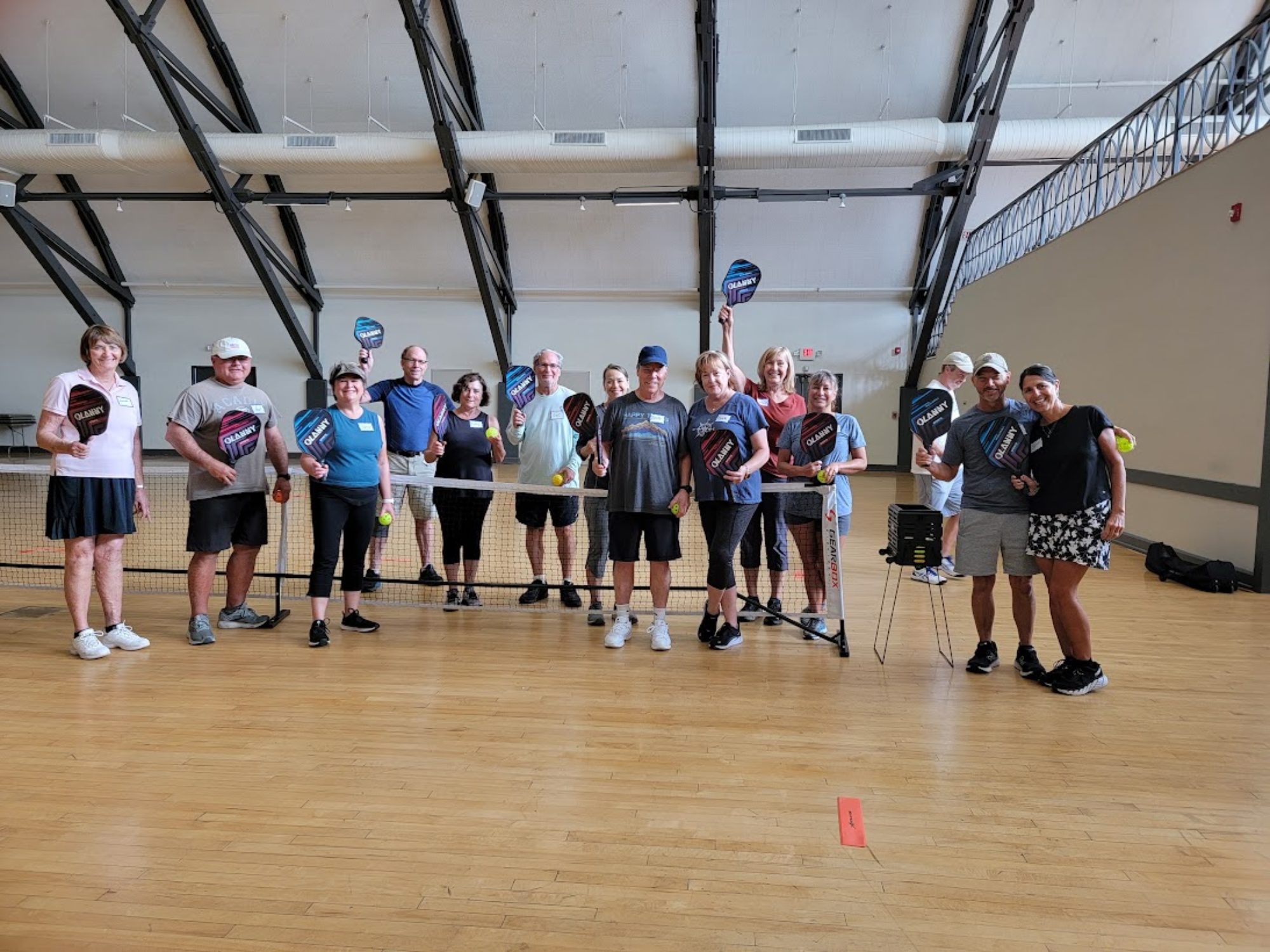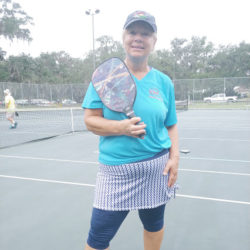The serve has been controversial since the drop serve was introduced in January 2021. Then Zane came up with the COVID serve, also know as the chainsaw serve…or the Zane serve. Now that tournaments are beginning to outlaw the drop serve, the questions is…will the only serve allowed in 2022 be the standard and back to basics, underhand serve.
Here is a post I saw on Facebook and Morgan makes a good point.
|
Dear Rules Committee
Soon you will be asked to vote on a proposed rule change that will ban some or all techniques that create additional spin on the serve. As founder of one such technique in question, I believe I am entitled to offer an opinion.
What’s primarily in question is whether or not offensive serves are in the spirit of the game. It’s been 3 years since I started imparting spin on the ball toss, however only recently has the style gained notoriety, largely due to the creative adaptation from fellow pro player, Zane Navratil, that incorporates the use of the paddle and/or the paddle hand to provide a kind of pre-spin on the ball toss.
Allow me to wind back the clock for a moment. One day in the late 90’s Levon Major hopped the kitchen line, hit a volley and won the point. Soon Erne Perry performed the same move in a tournament, and the Erne was born. When opposite Tyler Loong, we all fear the repercussions of an errant dink, and I wouldn’t have it any other way because without the threat of the Erne, players wouldn’t have learned how to defend against them. Moves and counter moves. Levon and Erne changed the game.
The game grew.
Pickleball was born in the mid-sixties. You know what else started around then…The Alley Oop. The wild new way to score hit the big time with Bill Russell and Wilt Chamberlain leading the charge. The technique is still used today but we don’t see it 10 times a game. Why? because teams learned how to defend against it.
The game grew.
In 2016 Marcin Rozpedski and myself invented the shake and bake. We were being out-dinked at the Le Master Davison classic and we needed a solution. After a couple of bottles of 5 Hour Energy we patented the new style of attack. In the following years hundreds of players had to deal with Marcin crashing the line and poaching with deadly intent. You know what those opponents did? They got better. Returns got deeper, players reacted faster, hit sharper volleys and successfully learnt how to defend against the attack.
The game grew.
The return of serve is a skill and I believe we will stifle the development of that skill by taking away the most challenging serves. Necessity is the father of invention. These creative serves force players to improve their return of serve skill. Dekel Bar can hit a serve faster than most people can pitch a baseball, and his opponents have had to learn how to return it. Power is a skill. Spinning a ball is a skill. Accuracy is a skill. No one has ever been told that a ball toss can’t be a skill. Not one Referee has ever given me so much as a warning. I’m not 220lbs with the power of an Israeli Demi-god, but I’m good with my hands so that’s what I use in order to compete in a rapidly deepening field. I believe that if the technique used is within the rules of the game, what difference should it make which skill is employed to make a serve better? If you ban one skill that makes a serve more offensive, under the pretense that the game wasn’t intended to have offensive serves, doesn’t it then stand to reason that you must ban any kind of offensive serve. Who wants to go down that road? There would be no serves with power, accuracy, or spin. That doesn’t sound too fun does it?
Imagine baseball without the curveballs, imagine tennis without the kick serve, basketball without the Alley-Oop.
What if a technique was developed under the full rules of the game, that allowed a player to serve at full speed with laser-like accuracy. I imagine it would be very effective. Should we take that technique away from the game?
What do we all get asked? When is the sport going to be in the olympics? Well, I would argue an offensive sport is more popular and much more marketable than a defensive one. People don’t clammer to see Mayweather just duck and weave for 12 rounds, and people aren’t on eBay buying tickets to the next NBA Rebound Championships.
Let’s imagine this scenario. It’s the year 2032. We finally have flying cars but the number one cause of death is…. flying cars. Pickleball is alive and well. 95% percent of professional pickleball players have either played ATP/WTA tennis or have been pro pickleball players for 10 + years. Ben Johns is approaching his mid 30’s but still looks 18. The best players are making $100K plus and the mainstream media is embracing the sport. A scrappy but adorable young Australian washes ashore, starts playing the game and develops a new way to serve, well within the rules of the game. During tournaments, the serve is used and returned by essentially everyone who meets it. It’s 2032 and the level of skill required to return the serve is possessed by all but a few. The game grew. In this scenario, would we need to ban the serve? No. It would only be seen as innovation because there is no downside. It looks different, makes the game more interesting and only slightly more challenging.
Now let’s consider another scenario. The year is once again 2032. It’s the 10yr anniversary of an important moment in the history of the game. The day the rules committee agreed to continue to allow a one handed ball toss to impart spin. In the years after the serve was born, players adapted their return technique and developed their skills to meet the demands.
The game grew.
I don’t think the problem is that the serve is not in the spirit of the game. It just came along too soon. If this serve was born 10 yrs from now, the spirit of the game wouldn’t be affected because everyone would be able to return it. I think this is a classic chicken and the egg scenario. Let’s not kill the egg before we meet the chicken.
What’s being deemed as not in the spirit of the game is being labeled so not because of the action, but by the reaction. Not by the serve, but by the return. I present to you that it’s too early to understand the reaction. I can also attest that the chief proponents of this serve, myself and Zane Navratil, both report the same thing, the players that have the most experience returning these serves, don’t have any problems getting the return in. It’s not a matter of IF players will be able to effectively return the serves, it’s just a matter of WHEN.
Each and every year the bar is raised. There are moments. People, Shots. Plays that never were, are suddenly born and once again the game grows.
This is one of those moments.
I ask you kindly to allow the game to grow once more.
Yours sincerely
Morgan Evans
|
|



Agree. Offensive skills and serves are key to most all ball and paddle, racket, bat, etc. sports. The, “just get the serve in” mindset, is the most boring of the pickleball disciplines.
Totally agree.
I agree to let the drop serve continue thru 2022. I’ve developed some hard angled, deep drives and some slow spinning drops just past the kitchen line.
Completely agree, it seems folly to have such a serve removed. It does not break the game by any means and adds additional depth and creativity to how one can play.
I believe that the drip serve should continue to be allowed!
The drop serve is very natural for those of us who when we practice tennis or Pickleball, to start a rally you drop it and hit it from there.
Also it’s nice not to worry about someone saying your paddle wasn’t below your wrist or that you didn’t make contact below your navel.
I think the drop serve is much more natural for most players. If it’s not accepted, I will be very disappointed.
I don’t agree that the serve should be easy and merely a way to begin the point. I have developed variations with the drop serve and use them to keep my opponents off guard. I believe that it should be made permanent.
The extra spin serve should be banned. It defeats the nature of the sport.
It will overwhelm the game and turn it into spin competition.
I too believe the drop serve should be maintained. As long as the bounce is below the waist, serves should be accepted.
The Drop Serve is fine …. does, indeed, add offense ( and return strategy ) to the game. The only new rule that was put in for 2021 that seems completely wrong-headed and goes against the grain of the “spirit of the game” is the asinine rule that says a let ball on a serve is good providing it doesn’t land in the kitchen.
Whenever this happens in our league, the server just about always can be heard saying, “Sorry … i hate that rule, too. ”
This let rule is entirely based on luck …one that seems to grate on the nerves of players on both sides of the net. Time to scuttle the silly thing.
I feel that both of these serves should be maintained. It really makes you a better defensive player. Really , if you’re opposed to the drop or the spin serve what it means is that you need to learn how to hit it. The reality of the situation is once you learn to return that serve it also puts pressure on the serving team because the spin can be maintained and redirected to create an advantage. So it forces each side to grow, learn and adapt. I mean, should we all just go back to wood paddles and old limits on what a paddle technology can do or the materials that it can use?